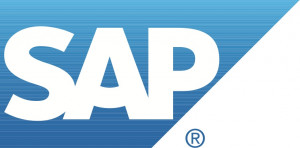This blog post is an excerpt from GovLoop’s recent guide The Human Resources Playbook for Government. Download the full guide here.
The ability to effectively recruit and hire top talent isn’t a unique challenge to government. Other established industries, such as engineering and manufacturing, are also feeling the pressure of increased competition for skilled professionals.
“Agencies are competing with each other and with commercial entities for the same talent,” said Dan Falvey, Executive Advisor for HR Strategy at SAP, an enterprise management solutions provider for the public sector. “Some blame this competition on a shrinking talent pool, while others feel they need to broaden the pool of candidates they recruit from.”
That’s only part of the problem, Falvey said. “There is also an image and a brand challenge that government agencies face.”
Government is often perceived as employing an older, more tenured workforce. The impression is the work environment is static and more transaction-oriented, leaving little room for innovation. Instead, agencies should be leading the conversations about their workplaces and shaping how others identify them.
When it comes to branding, Falvey recommended that agencies create a brand that can be marketed to a broad range of potential candidates. Building a strong brand can help an agency stand out in a competitive environment, one where employers are vying for employees with similar skills. He offered some tips to help agencies create a thoughtful and meaningful brand.
“One way is to tap into the excitement of highly engaged employees and find out what drives them,” he said. “Find out how they describe the agency to other people, both internally and externally, and what they find rewarding and exciting about working there. You can use those insights to develop your brand.”
In terms of hiring and recruiting, another ongoing issue that agencies grapple with is compensation.
“I don’t necessarily mean overall pay packages,” Falvey said. “It’s a mix of total rewards that government agencies may have to reconsider and tweak.” For example, seasoned employees may be more interested in healthcare and retirement benefits than younger employees, who may need immediate cash flow to pay off loans. Agencies must consider the varying needs of a multi-generational workforce and how they can create competitive compensation packages with limited funding.
In addition to competition, branding and compensation challenges, agencies must also evaluate whether their onboarding practices are helping or hindering their hiring efforts. New employees can become engaged or disengaged very quickly, depending on their first weeks and months at an agency. Negative experiences can affect productivity, engagement, retention and reputation, all of which impact recruiting and hiring. Ensuring employees have meaningful work assignments early on and creating a modern work environment with technology can go a long way in engaging new employees early and often.
Falvey highlighted technology as a key enabler to enhance the overall recruiting and hiring process. It can help agencies optimize their search efforts by connecting them with the best candidates via social media and other online channels.
“Technology can help agencies create a talent community,” he said. “The interesting thing about creating a talent community is that you’re maintaining relationships with people who have come through your world voluntarily. Maybe they’ve sought out your agency for employment opportunities in the past, or maybe they’ve referred somebody internally for a position.”
Human capital management (HCM) software enables agencies to manage and engage that talent community. For example, SAP works closely with agencies to maintain full visibility of their talent pool, making it easier to quickly identify candidates internally and externally when needs arise. The company’s cloud-based solutions equip agencies with collaborative tools for recruiting, hiring, workforce management and more.
“The challenge for many employers is there are often too many steps in the hiring process, specifically when it comes to interviewing candidates,” Falvey said. “They get interview fatigue and in some cases disengaged because there are too many steps that could be streamlined.” That’s an area where technology can also benefit agencies. Thanks to automation and better tracking tools, agencies can document and streamline hiring and keep candidates informed throughout the process. But technology alone can’t address every challenge.
Hiring managers and HR professionals must work collaboratively to ensure candidates are a good fit for the agency, taking into account both personality and skill. They should also hire for development capacity, Falvey said. Younger employees want a career path, and they want to know that they’re working toward a goal.
“As the workforce evolves, leadership has to embrace this multigenerational and multicultural group of employees,” he said. “They have to create a culture that embraces everybody. When that happens, it will fuel efforts to brand the agency and improve hiring, recruiting and retention.”






Leave a Reply
You must be logged in to post a comment.